A meteor is a small celestial body that enters the Earth’s atmosphere and burns up, creating a bright streak of light in the sky. It is commonly referred to as a shooting star or falling star. Meteors are typically composed of rock or metal and can range in size from tiny grains to larger objects. When a meteor enters the Earth’s atmosphere, the friction with the air causes it to heat up and produce a glowing trail of hot gas. Most meteors completely burn up before reaching the Earth’s surface, but larger ones can survive and create impact craters.
Meteors are often associated with meteor showers, which occur when the Earth passes through a trail of debris left behind by a comet or asteroid. During a meteor shower, numerous meteors can be seen streaking across the sky within a short period of time. The most well-known meteor shower is the Perseids, which takes place every August and is visible in the Northern Hemisphere.
Studying meteors can provide valuable insights into the composition and origin of the solar system. By analyzing the chemical makeup of meteors, scientists can learn about the elements and compounds present in the early solar nebula from which the planets formed. Meteors can also provide clues about the processes that occurred during the formation and evolution of the solar system.
- A meteor (Greek μετέωρος, “meteoros”), which means “floating in the air”, refers to a natural phenomenon that occurs when small meteoric bodies (such as fragments of comets or asteroids) combust in the Earth’s atmosphere. A more intense version of this phenomenon, with a brightness greater than stellar magnitude -4, is known as a bolide. There are both oncoming and catch-up phenomena associated with meteors. These interdisciplinary phenomena are the subject of study in meteoritics, a branch of astronomy, as well as atmospheric physics.
Other related concepts
Starfall (meteor shower, star shower) – a phenomenon caused by a group of meteoric bodies entering the Earth’s atmosphere.
Comet (from the Greek word κομήτης, komḗtēs – hairy) – a small celestial object. The term “comet” refers to its hair-like structure. Comets have a “head” and a long “tail” resembling hair. In the past, comets were often feared as signs of plagues, wars, and death.
Solar corona – the outer layers of the Sun’s atmosphere, starting above the thin transition layer above the chromosphere, where the temperature increases significantly.
The zodiacal light is a dim illumination that can be seen shortly after the sun sets or before it rises, specifically during the transition between night and day known as astronomical twilight. It is called zodiacal light due to its consistent appearance in the zodiacal constellations.
References in written works
Meteor showers, also known as star showers, occur when the Earth passes through rings of rocks formed by fragments of comets. These rings are primarily located between Mars and Jupiter, but some extend around the Sun. One well-known meteor shower is the Leonids, which takes place from November 14 to 21, with the peak activity occurring on November 17-18. The Leonids have been observed and documented since ancient times, with the earliest recorded description dating back to 901 in Alexandria. The comet Tempel-Tuttle is believed to be the progenitor of the Leonid meteor stream. There have been instances when the Leonids have produced particularly intense meteor showers, such as in 1901, 1934, 1966, and 1999. On average, the Leonids produce around 40 meteors per hour. These meteors are known for their high speed and white color, traveling at approximately 71 km/h.
Nowadays, astronomers have extensively researched meteors and have come to the conclusion that they are actually remnants from comets. When comets break apart, they form millions of small and large pieces, with the larger ones continuing to move in groups known as “swarms” or meteor streams. These meteor streams, as well as individual large meteors, follow regular orbits as they travel through space.
By studying the paths and speeds of meteors, scientists are able to calculate their orbits, which provides valuable scientific information. This data is used to investigate the distribution of matter in the solar system, the evolution of celestial bodies, and much more. Additionally, there is a practical application for this research: the ionized gas left behind by meteors can be utilized to create short-range communication channels.
Meteoroids refer to small entities that can be seen as meteors or bolides when they enter the Earth’s atmosphere and burn up. These occurrences are commonly known as “falling stars” and, in the case of larger meteoroids, “star rain” (Fig. 2.1). Typically, meteoroids are no larger than a few meters in size. However, some meteoroids do manage to reach the Earth’s surface and become meteorites. Many meteoroids are actually fragments that have broken off from cometary nuclei.
Meteoroids, also known as “falling stars”, are brief luminous events in the Earth’s atmosphere, bursts created by cosmic matter particles (referred to as meteor bodies) that enter the atmosphere at speeds of tens of kilometers per second. These particles, heated by friction with the air, become incandescent, break apart, creating additional bursts along their trajectory, and disintegrate. As the meteoroid traverses the atmosphere, it causes the atoms and molecules in the air to become ionized and emit light. The brightness and color of a meteoroid depend on the mass of the particle and the magnitude of its velocity relative to the Earth.
Other related concepts
Astronomical Objects (Derived from the Greek word “astron” meaning “star”) – refer to celestial bodies such as planets, moons, stars, asteroids, and comets that exist within the universe.
Orbit (Derived from the Latin word “orbita” meaning “path”) – refers to the curved path followed by a celestial body or spacecraft around a star, planet, or moon due to the gravitational force.
The elongated plume of dust and gas made up of cometary matter that forms when a comet gets close to the Sun and becomes visible due to sunlight scattering on it is known as the tail of a comet. Typically, it is directed away from the Sun.
An astronomical event called the transit of Mercury occurs when Mercury moves precisely between the Sun and the observer’s point (such as Earth or a spacecraft). This event is visible as a small black dot moving across the surface of the Sun when observed from Earth or nearby locations.
An Astronomical Object or Celestial Body refers to a natural physical entity, association, or formation that is recognized by modern science as existing within the observable universe. The term “astronomical object” is often used interchangeably with the term “body”. Typically, a “celestial body” is a self-contained, singular structure that is held together by gravitational forces (and sometimes electromagnetic forces) . Examples of celestial bodies include asteroids, satellites, planets, and stars. These “astronomical objects” are all structures that are bound together by gravitational forces.
A Radiant (derived from the Latin word “radians”, gen. radiantis – meaning radiating) refers to a specific region on the celestial sphere that appears to be the origin point of meteors. Meteors are observed when the Earth intersects with a cluster of meteoric bodies that are moving along a shared orbit around the Sun.
Coma (derived from the Latin word “coma”, from the Greek words χομη/κομη – hair) is a celestial phenomenon consisting of a cloud of dust and gas that surrounds the central nucleus of a comet. Together, the “coma” and the “nucleus” create the distinctive “head” of the comet. As the comet approaches the Sun, the “head” expands in size and occasionally develops a visible “tail”.
The nucleus of a comet is the solid core, which is relatively small in size. The coma forms around this nucleus when the comet becomes active as it approaches the Sun.
Great comets are comets that exhibit exceptional brightness and are easily visible from Earth. On average, a great comet appears approximately once every decade.
The giant planets, consisting of Jupiter, Saturn, Uranus, and Neptune, are the four outermost planets in the Solar System, located beyond the asteroid belt. These planets share various physical characteristics and are often referred to as the outer planets.
The term “Small body of the Solar System” was introduced by the International Astronomical Union in 2006 to categorize objects in our Solar System that do not fall into the categories of planets, dwarf planets, or their satellites.
An eclipse is an astronomical event where one celestial body blocks the light from another celestial body.
In astronomy, a conjunction refers to a configuration of celestial bodies where their ecliptic longitudes are equal. Sometimes, the concept of conjunction by direct ascent is also utilized instead of ecliptic longitude. Consequently, during a conjunction, two celestial bodies are relatively close to each other on the celestial sphere (although the moment of conjunction does not necessarily coincide with the moment of closest approach). The term conjunction can also be used in astrology.
The solar wind refers to a flow of charged particles, predominantly helium-hydrogen plasma, that emanates from the outer atmosphere of the sun and travels into the surrounding space at speeds ranging from 300 to 1200 km/s. This phenomenon represents a significant aspect of the interplanetary medium.
A satellite is an astronomical body that orbits around another object in outer space along a specified path, or orbit, due to the gravitational forces at play. Satellites can be classified as either artificial or natural in nature.
A solar flare is a dynamic process where energy (kinetic, light, and thermal) is explosively released in the atmosphere of our Sun. These flares impact all layers of the solar atmosphere, including the photosphere, chromosphere, and corona. It’s important to note that solar flares and coronal mass ejections are distinct and separate phenomena within solar activity. The energy unleashed during a powerful solar flare can reach an astounding 6×10^25 joules, which is roughly 1/6th of the Sun’s total energy output per second, equivalent to 160 billion joules.
The solar system is a planetary system encompassing the Sun, our central star, as well as all celestial bodies that orbit around it. This intricate system came into existence approximately 4.57 billion years ago through the gravitational collapse of a gas and dust cloud.
Cosmic dust, also known as micrometeorites, is a type of dust that is present in outer space. These dust particles range in size from a few molecules to 0.2 microns. It is estimated that approximately 60 tons of space dust falls onto planet Earth every day. Other calculations suggest that around 40 thousand tons of space material accumulate on Earth in a year.
The Leonids meteor shower is a well-known meteor shower that occurs between November 14 and 21. Its radiant is located in the constellation Leo (R. A. = 153°, Decl. = +22°). The Leonids meteor shower is especially famous for its intense meteor showers.
Mercury, named after the swift Roman god of commerce, is the closest planet to the Sun in the Solar System. Among the terrestrial planets, Mercury is the smallest. Its high speed of movement across the celestial sphere is what earned it the name “fast Mercury” among ancient Roman astronomers.
Silver clouds, also referred to as mesospheric clouds or night glowing clouds, are a unique occurrence in the atmosphere. These clouds are extremely rarefied and can be found in the mesosphere, just below the mesopause, at an elevation of 76-85 km above the Earth’s surface. They are most visible during deep twilight and are commonly observed during the summer months at latitudes between 43° and 65°, both in the northern and southern hemispheres. Interestingly, similar phenomena have been documented on other planets, including Mars.
Sunspots are regions on the surface of the Sun that appear darker than their surrounding areas. These spots have a temperature that is approximately 1500 K lower than the rest of the photosphere. They can be observed on the Sun’s disk using optical instruments, and in some cases, they can even be seen with the naked eye. Sunspots typically take the form of dark spots or patches. These areas are characterized by the presence of intense magnetic fields, which can reach strengths of several thousand gauss. The darkening of the photosphere in sunspots is a result of the magnetic field suppressing convective movements of matter, leading to a decrease in temperature.
Sungrazing comets, also known as near-solar comets or sungrazers, are comets that come extremely close to the Sun at perihelion, sometimes only a few thousand kilometers away from its surface. When these smaller near-solar comets approach the Sun, they may completely vaporize, while larger comets can survive multiple perihelion passages. However, the intense vaporization of the comet’s nucleus, along with tidal forces, often cause the comet to disintegrate.
An astronomical transit, also referred to as a transit, is a phenomenon in astronomy where one celestial body passes in front of another celestial body from the observer’s perspective, causing a partial obscuration.
The Roche limit refers to the radius of the circular orbit of a satellite around a celestial body where the gravitational forces from the central body are equal to the satellite’s own gravitational forces.
A spectroscope (also known as a spectrometer or spectrograph) is an optical device used to visually observe the spectrum of radiation. It is commonly used for quick qualitative spectral analysis in fields such as chemistry and metallurgy. The spectrum of radiation can be separated using an optical prism, and different parts of the spectrum can be observed using specific equipment, such as a fluorescent eyepiece for the ultraviolet spectrum or an electron-optical transducer for the near-infrared spectrum.
Hypothetical celestial bodies orbiting the Earth, which astronomers have assumed to exist, are referred to as natural satellites. Currently, it is widely acknowledged that the Moon is the only natural satellite of the Earth. However, astronomers have repeatedly proposed the existence of other satellites, which have been discussed in popular publications and depicted in works of fiction.
Astronomical objects in outer space that emit powerful radiation in the radio frequency range are known as radio sources. These objects represent some of the most extreme and energetic phenomena in the universe. Radio sources are studied by using radio telescopes to detect cosmic radio emissions.
Coronal mass ejection refers to the expulsion of material from the solar corona. It is challenging to observe coronal mass ejections from the Earth’s surface. The first recorded observation of coronal emissions in the visible wavelength range occurred in the early 1970s using the coronagraph on the Seventh Orbiting Solar Observatory. The SMM station continued to investigate this phenomenon in 1980.
Ash Moonlight is a unique occurrence where we witness the entire Moon, even though only a portion of it is lit up by the Sun. Simultaneously, the unilluminated part of the Moon’s surface takes on an unmistakable ash hue.
Radar astronomy is a branch of astronomy that involves studying celestial bodies using radar technology. This method allows scientists to determine various characteristics of these bodies, such as their velocities, distances, sizes, rotational elements, and surface properties. Unlike passive astronomical observations, which rely on analyzing the radiation emitted or scattered by the celestial bodies themselves, radar astronomy involves comparing the probing signal, whose parameters are known, with the echo signal to obtain information. This approach enables unprecedented accuracy in measurements.
The term “terminator” comes from the Latin word “terminare,” which means “to stop.” In astronomy, it refers to a line of division between the illuminated (light) part and the unilluminated (dark) part of a celestial body. When observing the terminator of a spherical body, it appears as a semi-ellipse, but it takes the form of a straight line at the end of the first and the beginning of the last quarters.
Perturbation, also known as orbital perturbation, refers to the deviation of a celestial object from its designated orbit due to external forces, rather than solely the gravitational pull of the center of mass within the system. These external forces can include the gravitational influence of other celestial bodies or the resistance encountered within the surrounding medium. The study of perturbations dates back to ancient times, when early attempts were made to calculate the movements of celestial bodies. However, the true nature of perturbations remained a mystery until the 17th century. It was during this time that Isaac Newton, in his pursuit to understand the laws of motion and gravitation, encountered significant challenges when applying them to the analysis of orbital perturbations.
Vulcan is a hypothetical planet that is believed to exist in a small orbit between Mercury and the Sun.
The magnetosphere, also known as the magnetic sphere, is an area of space surrounding a celestial body where the behavior of the plasma surrounding the body is influenced by the body’s magnetic field.
A shooting star, or meteor, is a small celestial object that enters Earth’s atmosphere and continues its path through space. In some cases, fragments of the meteor can fall to the Earth as meteorites if the object breaks apart or explodes in the dense atmosphere. The friction caused by Earth’s atmosphere causes the meteoroid to lose mass and velocity, resulting in a change in its orbit as it exits the atmosphere. Examples of notable meteor events include the Great Bolide of 1860 and the Great Daylight Bolide of 1972.
An astronomical satellite is a spacecraft specifically designed to conduct astronomical observations from outer space. These types of observatories are necessary because the Earth’s atmosphere acts as a barrier, trapping gamma-ray, X-ray, and ultraviolet radiation emitted by celestial bodies, as well as most infrared radiation.
The terrestrial planets, namely Mercury, Venus, Earth, and Mars, are the four planets located in the inner region of our Solar System. In contrast, the giant planets are situated in the outer region. According to various cosmogonic theories, many extrasolar planetary systems also exhibit a similar division, with solid planets occupying the inner regions and gas planets occupying the outer regions. In terms of structure and composition, some rocky asteroids share similarities with the terrestrial planets in our Solar System.
Mentions in literature (continuation)
What might have caused such an immense bombardment in terms of scale and scope? One possibility is that it was the result of a nascent planet in the solar system disintegrating under the gravitational pull of Jupiter. This planet was given the name Phaeton by science fiction writers, adding a poetic touch to its existence. Such a planetoid, or failed planet, would have originally orbited between Mars and Jupiter, where the well-known asteroid belt is currently situated. Characteristics of the most representative objects from this belt that have reached the Earth’s surface provide support for the hypothesis that the oldest space bombardment consisted of fragments from these asteroids.
To begin with, astronomers have the ability to anticipate the arrival of an unexpected visitor, as a vast network of advanced telescopes across numerous countries diligently monitors hazardous celestial objects. Additionally, there exist strategies to combat extraterrestrial invasions, such as launching a missile armed with a nuclear warhead at an asteroid, comet, or meteor, or executing a precisely targeted detonation in their immediate vicinity.
Every year, the Earth’s surface is bombarded by several thousand metric tons of cosmic material. The majority of this material consists of particles that are a millimeter or smaller in size, making them virtually undetectable to the naked eye. Occasionally, larger objects known as meteors or “shooting stars” can be seen streaking across the night sky, as they burn up harmlessly in the Earth’s dense atmosphere, providing a captivating display and an opportunity to make wishes. However, objects weighing less than a kilogram have the potential to travel great distances before meeting their demise, briefly illuminating the sky with a brilliant flash. Depending on their size and trajectory, these objects can even make it all the way to the Earth’s surface as intact meteorites or fragments. Meteorites are highly sought after by museums and private collectors, and they are often used to create amulets. Additionally, scientists study meteorites to gain insights into the workings of our solar system.
Every year, several thousand tons of cosmic matter fall onto the Earth’s surface. These cosmic particles range in size, from tiny grains of sand that go unnoticed to larger particles that can be seen as meteors or shooting stars on clear nights. These meteors burn harmlessly in the dense layers of the atmosphere, creating a beautiful spectacle and allowing people to make wishes. Sometimes, objects weighing a kilogram or less can travel a significant distance before disintegrating and briefly lighting up the sky. However, if these objects are of a suitable size and collide with the Earth on a sideways or catch-up course, they can land on the surface either as a single piece or in fragments. These rocks are known as meteorites and are highly sought after by museums and private collectors.
The concept of the potential existence of these SHMs was initially proposed by F. Klass, drawing from the existing literature on atmospheric electricity, which contains several accounts of lightning discharges occurring in clear weather. “The situation we are faced with is rather intricate. We have yet to fully comprehend the exact meaning of the term SHM, we are still unsure about the mechanisms behind the creation of SHMs, and it is important to acknowledge that we are grouping together phenomena of diverse nature under this single classification,” states Klass in his paper. In the paper, Klass documents the sighting of a phenomenon similar to a “flaming meteorite” by an airplane flying at an altitude of 3300 meters during a sunny day. “The object in question has been given the name CMM,” notes Klass. Why not consider it as a luminous meteor seen during daylight hours? Numerous sightings of such objects have been reported. The pilot’s observation of what appeared to be a tail on the luminous object does not confuse the researchers either.
Scientists led an expedition to the location of the asteroid impact in North Africa, Sudan. Upon witnessing fragments the size of a ship, they exclaimed, “Well, it’s a good thing this happened in the desert!” Dangerous objects, such as chemical plants, water reservoirs, and nuclear facilities, are scattered throughout our planet. The impact of even a small space object could ignite a deadly bomb. It is difficult to fathom, but even a harmless meteor has the potential to incite a state conflict. Interestingly, in 1972, when an 80-meter asteroid flew directly over America, Canadians mistook it for a Soviet warhead.
Thus far, our planet has managed to dodge streams of asteroids, but the impact of a single meteor could lead to a catastrophic global event.
Could the meteor attack have been predicted? “Not with the current resources in Russia”, said Lipunov. “We know how to do it, but it requires money. The Americans started building their system in the 1990s, after the movie ‘Armageddon’, and they have already spent around $220 million. We had to wait 25 more years until a meteor flew past Chelyabinsk and our authorities finally took action…”
Meteor (from the Greek word μετέωρος, meaning “celestial”) is a phenomenon caused by the combustion of small meteoric bodies (such as fragments of comets or asteroids) in the Earth’s atmosphere. A more intense version of this phenomenon, with a brightness greater than stellar magnitude -4, is called a bolide. There are oncoming and catch-up phenomena, which are studied in the field of meteoritics.
Description
An animation showcasing a brilliant meteor (-3 stars) with a trail originating from the Geminid Stream. This footage was captured on December 9, 2010 at SAO RAS.
Meteorites and meteoroids should be distinguished from meteors. A meteor is not classified as an object, such as a meteoroid, but rather as a phenomenon – specifically, the luminous trail left by a meteoroid. This phenomenon is referred to as a meteor, regardless of whether the meteoroid returns to outer space, disintegrates in the Earth’s atmosphere due to friction, or lands on Earth as a meteorite.
In addition to its mass and size, a meteor can be identified by its velocity, ignition height, track length, luminosity, and chemical composition, which affects the color of its combustion. For instance, if a meteor enters the Earth’s atmosphere at a velocity of 40 km/s and reaches a stellar magnitude of 1, it will ignite at an altitude of 100 km and extinguish at 80 km. Its visible path will be 60 km long, and if the observer is 150 km away, the flight duration will be 1.5 seconds. Based on these parameters, the average size of the meteor will be 0.6 mm with a mass of 6 mg. [1]
Oftentimes, meteors are organized into meteor streams – permanent clusters of meteors that show up at specific times of the year, on a specific side of the sky. Meteor streams like the Leonids, Quadrantids, and Perseids are well-known. All meteor streams are created by comets as a result of their disintegration while passing through the inner part of the solar system.
When visually observing meteor streams, meteors seem to come out from a single point in the sky – the radiant of the meteor stream. This is because of the shared origin and relatively close proximity of cosmic dust in outer space, which serves as the source of meteor streams.
The trail left by a meteor usually disappears quickly, but it can sometimes linger for several minutes and be influenced by the wind at the altitude where the meteor originated. By visually and photographically observing a meteor from a single location on the Earth’s surface, scientists can determine various factors such as the equatorial coordinates of the trail’s starting and ending points, as well as the position of the radiant based on observations of multiple meteors. Additionally, by making correlating observations of the same meteor from two different points, researchers can determine the meteor’s height, distance, and, for meteors with a stable trajectory, the speed and direction of the trail’s movement. In some cases, scientists can even construct a three-dimensional model of the meteor’s path [2].
Aside from visual and photographic techniques for studying meteors, the past 50 years have witnessed the emergence of electron-optical, spectrometric, and particularly radar approaches, which rely on the ability of meteor trails to scatter radio waves. By employing radio meteor sounding and investigating the movement of meteor trails, valuable insights about the condition and dynamics of the atmosphere at altitudes of approximately 100 km can be obtained. Additionally, meteor radio communication channels can be established. Notable installations for meteor research include photographic meteor patrols and meteor radar stations. One noteworthy international initiative in meteor research is the GLOBMET program, which was conducted during the 1980s [3].
Related Articles
Important Points
- ↑"NECESSARY PROBLEMS OF METEOR PHYSICS", V. N. Petrov, Leningrad, 450 pp
- ↑Tsesevich V.P. § 61. Observing Meteor Traces // What and How to Observe in the Sky. – 4th Edition. – Moscow: Nauka, 1973. – 384 pages.
- ↑Ovezgeldiev O.G., Kascheev B.L., Nechitailenko V.A.Global System of Meteor Observations // Bulletin of the USSR Academy of Sciences. – 1986. – No. 9. – pp. 83-88.
Books and Writings
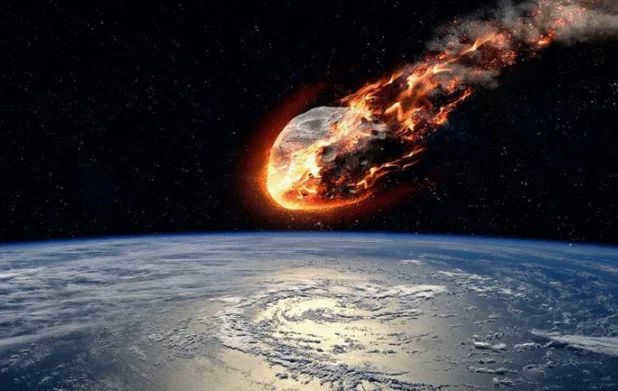
When it comes to astronomy, the solar system is home to a range of small celestial objects that are often known as meteors, meteorites, and meteoroids. Although these terms share a common origin, each one carries its own distinct definition. These fascinating entities evoke a wide array of emotions in people. For instance, the infamous Tunguska meteorite’s impact caused widespread destruction across a vast expanse of Russia. So, let’s delve into the unique characteristics of each of these cosmic entities.

With the world advancing at a rapid pace, it is no longer sufficient to confine one’s education to the school curriculum. It has become crucial to acquire valuable knowledge about finance and investments in order to ensure financial security.
Pave the way for your own future by gaining an extensive range of knowledge and skills in financial literacy today. Experience FINANCIAL LITERACY online.

Register now, PUT FORTH EFFORT.
Meteoroids
A meteoroid is a solid natural object that travels through outer space. The term originates from Greek and literally means “high in the air”. Meteoroids are also commonly referred to as mini-asteroids. They are classified as meteoroids as long as they are in motion in interplanetary space. Scientists have varying opinions on the sizes of meteoroids. Some suggest sizes ranging from 100 micrometers (1 micrometer = 0.000001 m) to 10 meters. Others consider these objects to be bodies with diameters up to 30 meters. Researchers have conflicting viewpoints regarding this matter.
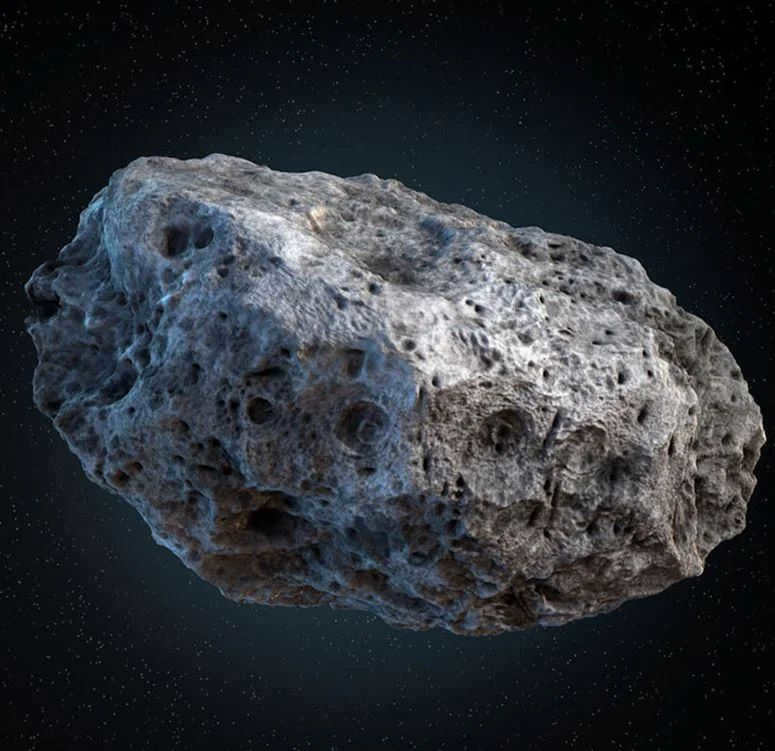
What are Meteors?
In addition to remnants of comets, the Earth attracts fragments of rocks and dust from space that are left behind after the demise of asteroids. These fragments enter the Earth’s atmosphere and burn up as a result of friction with the air, creating a luminous trail. These luminous trails are known as meteors, or commonly referred to as “shooting stars”. In ancient times, people believed that if they made a wish upon seeing a shooting star, it would come true.
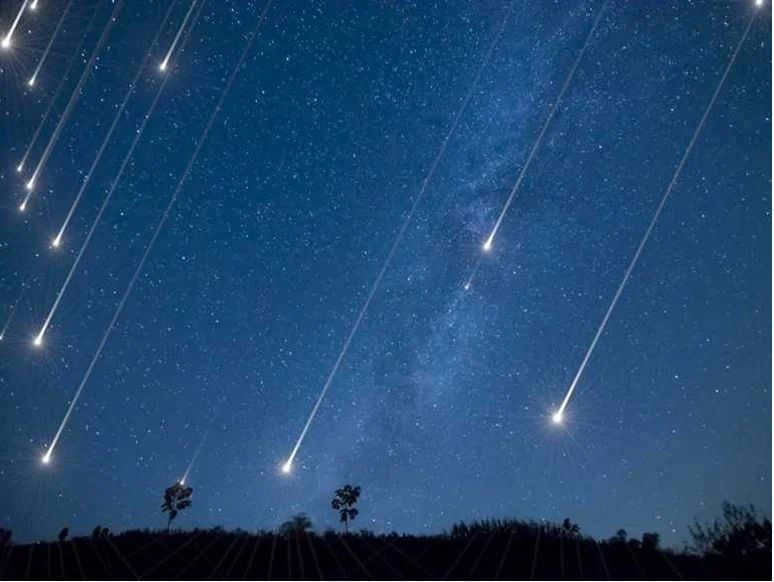

Meteoroids, which are small solid particles typically weighing fractions of a gram, are responsible for the mesmerizing phenomenon known as “shooting stars”. Outer space is teeming with these celestial remnants. Periodically, streams of these particles intersect with Earth’s path, becoming trapped by its gravitational pull and hurtling into the atmosphere at speeds ranging from 12 to 40 kilometers per second.
There are instances when these celestial bodies enter Earth’s atmosphere, traverse through it, and then continue their journey into outer space. While inside Earth’s atmosphere, these objects are referred to as meteors, and once they exit, they are known as meteoroids.
In the 19th century, an Italian scientist named Giovanni Virginio Schiaparelli provided scientific evidence that future meteors follow orbits that were previously traveled by vanished comets. This led other astronomers to propose that meteors are formed by the gradual breakdown of the nucleus of these “wandering tails.” The disintegration of a comet’s nucleus typically occurs over a long period of time, as the nucleus is repeatedly heated and compressed, causing its hard shell to develop deeper and deeper cracks.
Eventually, the comet starts to fragment into various-sized pieces, which travel alongside it in orbit and gradually transform into interstellar dust. As time goes on, this debris accumulates and the comet’s nucleus is no longer intact, but instead consists of fragments flying at close distances to one another. These fragments, in turn, disintegrate, giving rise to additional “clouds” of gas and dust particles. These clusters of particles give rise to comet tails that become increasingly elongated over time.
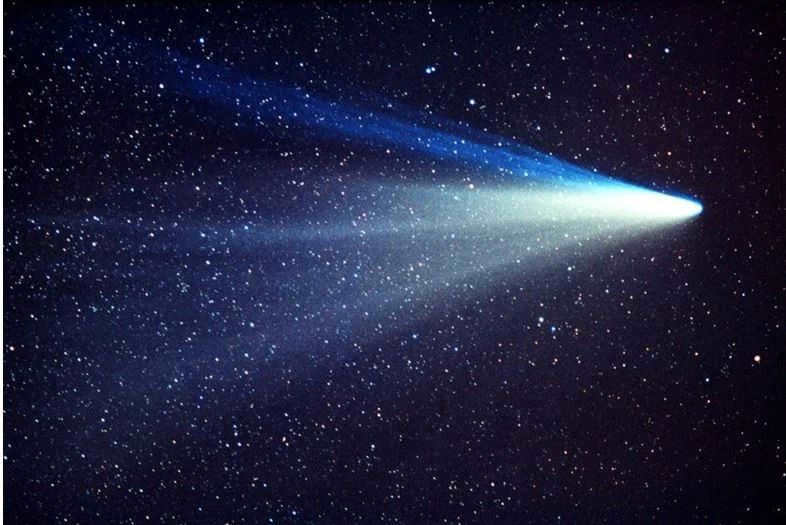

When a comet nucleus reaches the end of its lifespan, it transforms into a cloud of dust that gradually disperses in its orbit, creating a meteor stream. This meteor stream can intersect with Earth, resulting in meteor showers. Typically, this transformation process takes hundreds or even thousands of years. However, there have been instances where the destruction of a cometary nucleus and the subsequent formation of a new meteor shower have occurred right before our eyes, within a matter of years or even days.
As meteors enter the Earth’s atmosphere, they encounter significant air resistance which causes the particles to rapidly heat up and lose mass. This process also leads to the glow and ionization of atmospheric gases, resulting in the meteor burning up and transforming into a luminous gas that quickly dissipates. Consequently, the space object ceases to exist. These meteors typically fly at altitudes ranging from 55 to 120 kilometers and evaporate before reaching the Earth’s surface. Occasionally, meteor streams left behind by comets can create dense concentrations of meteor particles. When the Earth passes through such a stream, it can give rise to a remarkably beautiful phenomenon in the night sky. It appears as if a magnificent shower of stars is descending from the dark expanse above. Numerous bright sparks can be observed every minute, and this celestial “precipitation” can persist for several hours. This phenomenon is known as a meteor shower, which occurs when a cometary nucleus disintegrates and generates a cascade of shooting stars.
A stellar meteor shower is a rare phenomenon characterized by the presence of numerous meteors in the night sky. It is a sight that is seldom seen, occurring only a few times in a century. During these star showers, various changes in the atmosphere and magnetic field of the planet can be observed. These fluctuations include significant shifts in humidity, temperature, and pressure. Individuals with chronic illnesses may experience worsened symptoms during this time, while even healthy individuals may experience irritability, drowsiness, and headaches.
During a starfall event, luminous objects sequentially appear in the sky, giving the impression that they are emerging from the same point and spreading out in all directions. However, in reality, the particles of this meteor stream are actually moving parallel to each other.


Earth encounters large streams of meteors every year at approximately the same time. Each stream is named based on its coordinates. The central part of the stream, known as the radiant, is associated with the constellation against which it is observed. Traditional methods of observation are not always sufficient to detect faint meteor trails in the Earth’s atmosphere. However, with meteor radar, specialists can now detect meteor trails at any time of day and in any weather by capturing radio waves that are reflected by the trails.
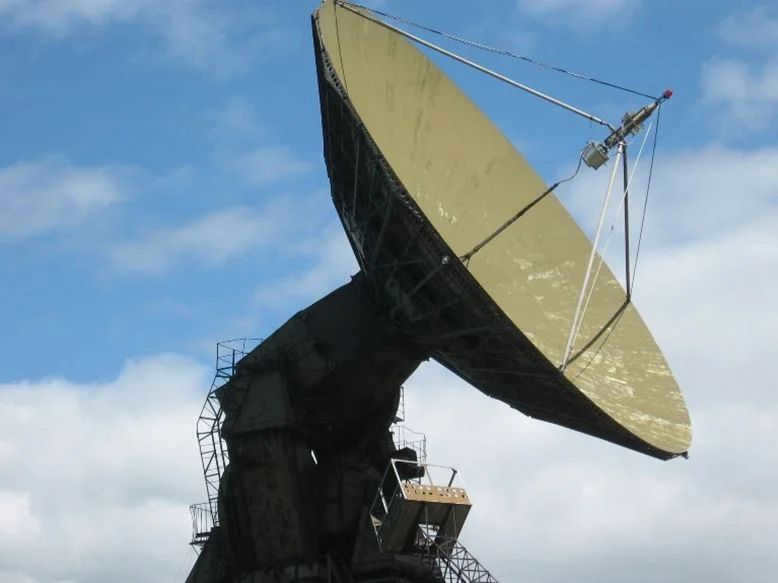
One of the most stunning and dazzling meteor showers that can be witnessed from our planet is the Leonids. It occurs every year amidst the backdrop of the Leo constellation in the middle of November. In a single hour, as many as 100 “shooting stars” burst forth. And every 33-34 years, the Earth crosses through the heart of this meteor shower, resulting in a true downpour of stars.
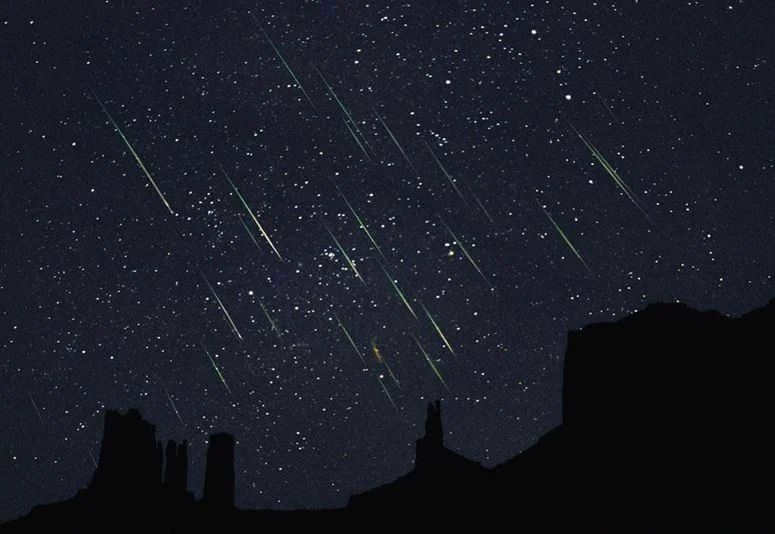

Observation of the Leonids meteor shower from the United States
Meteoroids
A meteoroid is commonly described as a small celestial body that enters the Earth’s atmosphere and burns up, creating a streak of light. When a comet’s nucleus breaks apart, it leaves behind not only dust but also larger fragments weighing kilogr
When a bolide appears in the sky, it means that the Earth’s magnetic field has attracted a sizable piece of debris and it is entering the atmosphere. This phenomenon is characterized by a large fireball with a long “tail”.
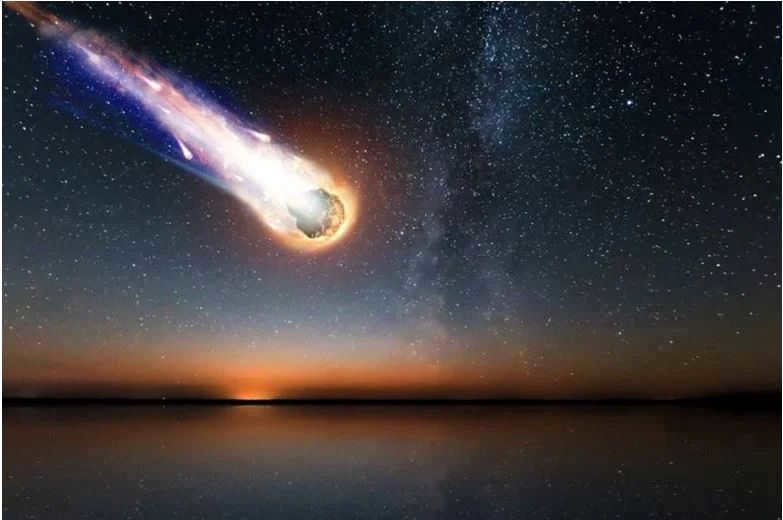

The rapid movement of the meteor is accompanied by the dispersion of sparks. Additionally, the entire area in which the bolide passes is illuminated by a brilliant light. Once the meteoroid completely burns up and vanishes from sight, the luminous misty trail remains in the sky for anywhere from several tens of minutes to an hour and a half. Frequently, the presence of the bolide is accompanied by a “sound accompaniment.” This occurs when the meteoric body is exceptionally large. In such cases, the brightness increases, and a few minutes after the “fireball” disappears, a loud rumble with thunder-like echoes can be heard.
As the bolide vanishes, a somber cloud emerges, resembling the aftermath of an explosion. The behavior of the object is contingent upon its mass. If the initial weight of the entity is relatively diminutive, it will merely incinerate in the atmosphere and vanish. Conversely, if the debris possesses a substantial mass, it will simply lack the time to incinerate entirely. In such an instance, a portion of the substance composing the bolide descends onto the planet’s surface.
What is a meteorite
No less fascinating are these small celestial bodies known as meteorites. We discuss them for good reason, following discussions on meteors and bolides. The reason being that meteors never actually make it to the Earth’s surface. They flash across the sky as fireballs and then vanish without a trace. As previously mentioned, some bolides do not completely burn up in the atmosphere, and their remnants fall to Earth as substantial molten fragments of stone or iron. It is these bodies, which not only manage to enter our planet’s atmosphere but also reach its surface, that we refer to as meteorites.
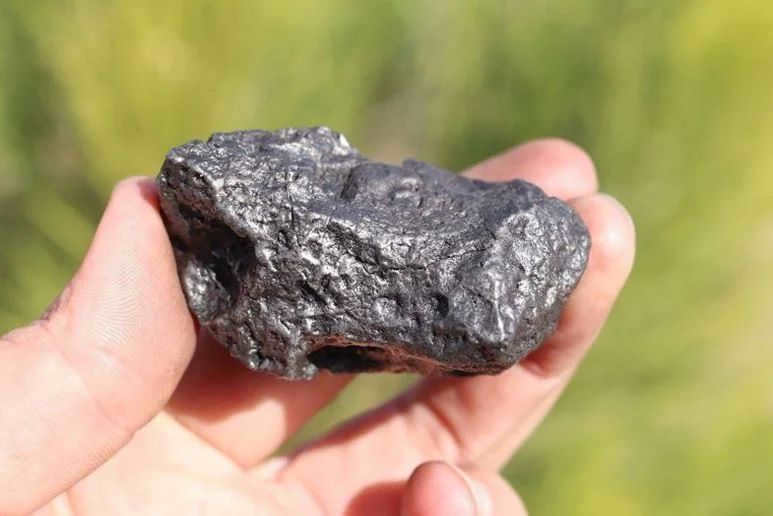

Meteorites may not be visually appealing, as they appear as gray, black, or brown fragments of stones or iron with a fusion crust that is about 1 mm thick. However, these objects play a crucial role in helping us understand the history of celestial bodies. In laboratory conditions, experts analyze their chemical and mineral composition, structure, and physical properties.
The origin of meteorites can be determined with a high level of accuracy. Some are formed through the destruction of cometary nuclei. Additionally, larger celestial bodies such as asteroids occasionally fragment and fall into Earth’s atmosphere. Furthermore, certain meteorites are created from remnants of protoplanetary matter that continue to travel through interplanetary space.
Stone meteorites are the most common type of meteorites that land on Earth, while stone-iron meteorites are much less common. Iron meteorites are extremely rare, making up less than 20% of all fallen objects. Regardless of the size of the meteorite that lands on our planet, it is of great scientific interest. Scientists are constantly on the lookout for new space debris, and expeditions are frequently sent to deserts or Antarctica, where they are most likely to find these precious objects.
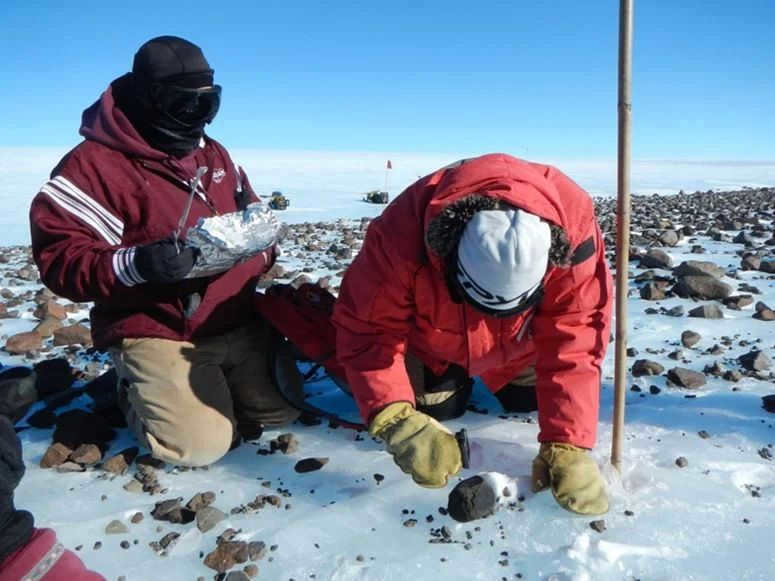

Exploring for meteorites in Antarctica
The stone meteorite, also known as the black stone, that is most renowned and respected, can be found in Saudi Arabia, specifically in the sacred city of Mecca. It has been incorporated into the wall of the Kaaba temple, and each year, devout pilgrims make the journey to Mecca in order to pay homage to this sacred relic. In 1920, the largest solid iron meteorite, weighing an impressive 60 tons, was discovered in Namibia, located in Southwest Africa. This extraordinary meteorite was given the name Goba, after the location of its descent. Interestingly, after being studied, this colossal piece of space debris was left in the exact spot where it had originally fallen.
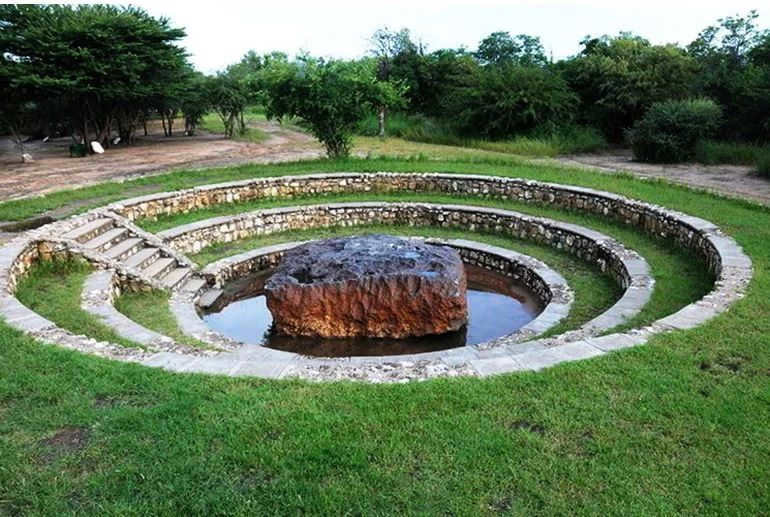

Iron-stone meteorites known as pallasites are of special interest to experts. They often contain inclusions of various minerals, some of which are highly valuable.
Pallasitic iron is one of the most unique meteorites discovered in Russia. It contains the mineral olivine. In 1749, a blacksmith named Medvedev found this fragment on the bank of the Yenisei River. By order of Academician Peter Simon Pallas, the block weighing over half a ton was transported from Siberia to St. Petersburg. In 1794, it was studied by the renowned German physicist E. Khladni, who concluded that this extraordinary fragment originated from interplanetary space.
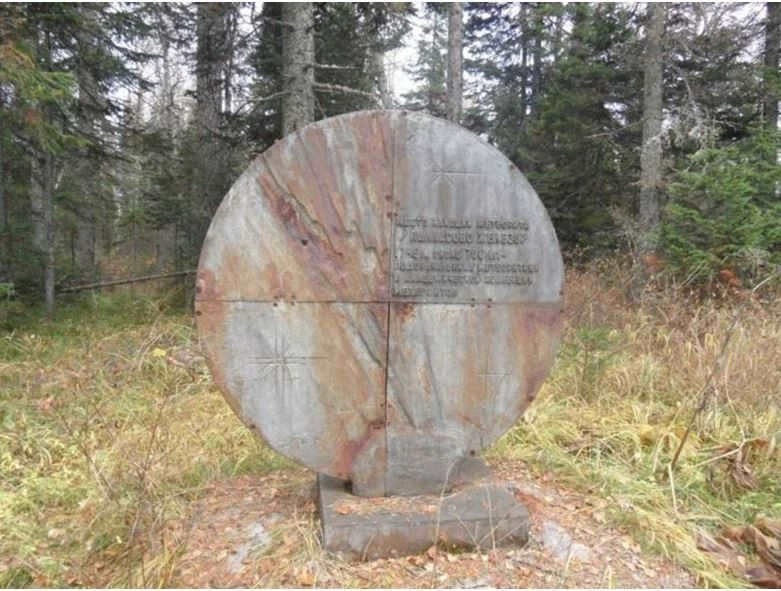

The location of the impact of the “Pallas’ iron” meteorite
The Earth continues to receive meteorite impacts to this day. On average, around 100 tons of extraterrestrial material land on our planet’s surface every year.
Among the largest meteorites, weighing over 1000 kg, are:
- Sikhote-Alin – weighing 23 tons, discovered in Primorsky Krai, Russia;
- Girin – 4 tons, found in China;
- Allende – the most extensively studied meteorite, weighing 2 tons. Discovered in Mexico.
Astroblems: Unique Geological Structures Left by Unknown Space Bodies
Astroblems are geological structures of shock origin that were left on our planet in ancient times by unknown space bodies. Scientists have identified over 100 astroblems so far.
Our planet is home to a vast number of impact craters. However, most of them formed so long ago that it is now impossible to determine the exact nature of the bodies that caused them. Locating these astroblems is no easy task. Over thousands or even hundreds of thousands of years, wind, rain, vegetation, and soil erosion have diligently worked to erase any evidence of their occurrence. As a result, many of these astroblems can only be clearly seen from a great height or even from space.
Devil’s Gulch
One of the most well-known astroblems can be found in the state of Arizona on the American continent. Approximately 50,000 years ago, an unidentified object created a massive crater in this area. In terms of geological time, this event is relatively recent, making the Arizona Crater one of the youngest astroblems.
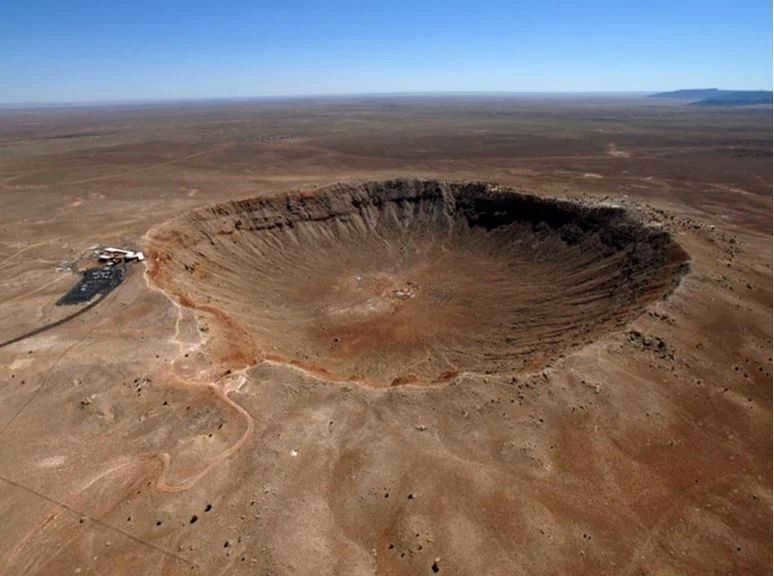

Presently, it is recognized as Devil’s Gulch. The diameter of this crater is 1200 meters, and its deepness is 180 meters. This immense flat-bottomed crater is situated in a red-yellow steppe covered with scattered thorny shrubs.
To get a glimpse of it, you must ascend a 50-meter ridge. Surrounding Devil’s Gorge were discovered numerous iron fragments, with a total weight of about 20 tons. Judging by the dimensions of the crater and the leftover matter that endured after the impact, the meteorite that descended upon the United States weighed several thousand tons.
Holder of the Canadian “Record”
In 1950, Canada unveiled another groundbreaking discovery. It appears that they have stumbled upon one of the largest remnants of ancient craters caused by celestial objects on Earth’s surface. The sheer size of this Canadian astroblem kept it hidden for quite some time. No one could fathom that this massive crater was actually a unique geological formation, measuring over 3600 meters in diameter. The origin and arrival time of the celestial body responsible for this dent still remain a mystery for scientists to solve.
Chikskulub – a reminiscence of challenging times
The extinction of dinosaurs occurred due to the devastating effects of darkness and cold, which led to the death of most plants. Additionally, it is believed that a significant amount of sulfur was released into the atmosphere during this catastrophe, resulting in the formation of sulfuric acid clouds. The acid rain caused widespread destruction of vegetation and animal life on the planet. The discovery of the crater left by the massive celestial object only took place in the 1990s, thanks to advanced equipment and the ability to conduct space surveys.
The catastrophic collision of a meteorite with Earth’s surface occurred on the Yucatan Peninsula in Mexico. It was there that the Chicxulub crater was found – a colossal crater estimated to be around 65 million years old, with a width of 180 km and a depth of 900 meters. This crater is one of the largest impact sites on Earth caused by celestial bodies.

Source
Crater in India
Many scientists support Yuri’s hypothesis as a plausible explanation. However, further refinement is still necessary. It is highly likely that the colossal meteor that impacted the Yucatan Peninsula was just the initial event of a series of similar catastrophes. Multiple objects of the same nature have repeatedly fallen on the Earth’s surface, albeit with relatively short intervals between each occurrence. The presence of anomalies in the sedimentary rocks serves as evidence for this claim. These events triggered intense volcanic activity, including eruptions and the formation of dust clouds, which subsequently altered the global climate. The period of global cooling was eventually replaced by a period of global warming.
Maybe the extinction of the dinosaurs was caused by a gigantic asteroid that crashed into Earth. It is believed that this asteroid was so massive that it left behind a massive crater on the planet’s surface, similar to the Chikskulub crater created by the Mexican meteorite. However, it took a long time to discover evidence of this asteroid’s impact because many ancient craters have been eroded by soil over time, making them difficult to identify using traditional methods. Even aerial photography does not always provide conclusive results, as large astroblems can easily be mistaken for natural features.
The quest to discover ancient craters is currently being carried out through the use of space technology. By doing so, we are able to uncover evidence of colossal impacts caused by celestial bodies during prehistoric times. Through this method, a newly discovered enormous crater named Shiva has been identified in the Indian Ocean, close to Mumbai. With a diameter of 500 kilometers, Shiva is believed to have been formed by a space object that had a detrimental impact on the survival of dinosaurs.
The location of the Tunguska meteorite impact site is quite challenging to access. It is situated in a secluded and desolate region of Siberia. Reaching this area is not a simple task due to the marshy landscape and unique characteristics of the natural zone. Consequently, investigations into the meteorite only commenced in 1927. The enigma surrounding the Tunguska meteorite remains unresolved, with numerous theories and conjectures proposed to explain the explosion’s origins. Thus far, scientists worldwide have yet to reach a consensus on this perplexing phenomenon.


The location where the Tunguska meteorite fell
The descent of the Chelyabinsk meteorite
On February 15, 2013, the Chelyabinsk region near Lake Chebarkul witnessed the descent of another celestial object, which will be known as the Chelyabinsk meteorite. This extraordinary event was visible to residents of several regions in Russia and some areas in Kazakhstan. The Chelyabinsk meteorite had a diameter of 19.8 meters.
Fishermen who were fishing in the lake were the witnesses of the meteorite’s descent. They observed about 7 fragments, one of which fell into Lake Chebarkul. The impact created a water column of 3-4 meters in height. The explosion caused windows to shatter and roofs to be damaged in nearby settlements. Fortunately, the meteorite broke apart into several pieces at a height of 15-25 meters due to a series of explosions, preventing more significant damage. Additionally, the meteorite followed a gentle trajectory as it entered the atmosphere, allowing most of its energy to dissipate. The Chelyabinsk meteorite fall resulted in injuries of varying severity for 1491 residents, making it the largest number of victims in the history of meteorite falls worldwide.
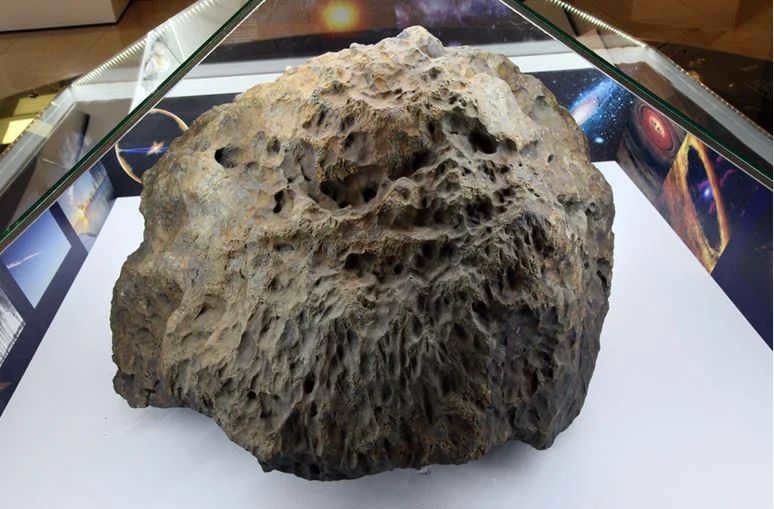

The Chelyabinsk meteorite
Advanced Approaches to Safeguarding Against Meteorites
The occurrence of natural calamities compels scientists to devise strategies for safeguarding against meteorites. The impact of the Chelyabinsk meteorite, which resulted in substantial financial losses in populated regions of Russia, has spurred efforts in this field. Protecting against meteorites entails a collection of methodologies that can alter the trajectory of objects coming perilously close to Earth and prevent potential cosmic disasters. Any collision prevention method must be both efficient and technologically advanced, necessitating significant financial investments.
- The concept of kinetic ram involves launching a massive object, such as a spacecraft, from Earth’s surface into space. This object would serve as a ram, colliding with small asteroids composed of solid material. This approach could be highly effective in diverting such asteroids.
- An alternative method to explosions is the asteroid gravity tug. This technique involves shifting the trajectory of an asteroid by applying lateral force. A heavy unmanned spacecraft would be utilized as the tug, hovering above the asteroid and utilizing strong gravitational interaction to pull it aside, redirecting it to a safer orbit.
- Ion beam – a similar approach involves utilizing an ion cannon mounted on a spacecraft positioned in close proximity to the asteroid. Instead of relying on gravitational force, kinetic energy is harnessed to alter the object’s flight path. This method offers the advantage of utilizing a lighter spacecraft.
- Rocket engines – an alternative proposal suggests the installation of a rocket engine on the near-Earth object, providing a continuous deflection that would result in a change in trajectory.
There are, of course, various other methods and strategies to consider. Experts are actively exploring these options. For instance, one proposal is to install an electromagnetic catapult on the asteroid, which would utilize the asteroid’s own substance as a source of fuel. Another suggestion is to attach a heavy ballast to the object in order to alter its trajectory by shifting the center of gravity. There is even discussion about using a shockwave emitter. It is important to note, however, that none of these methods have been put into practice yet. Ultimately, humanity can only hope that in the future, there will be no need to alter or destroy the path of an asteroid.
With the rise in popularity of science in comics, literature, and movies, an increasing number of space terms have made their way into everyday conversation. However, some of these terms have become synonymous with each other, despite actually representing different phenomena and objects. So, what distinguishes meteorites, meteors, comets, and asteroids, and what other terms do scientists use to describe them? AiF.ru explores.
What is the definition of a meteorite?
The term “meteorite” originates from the Greek phrase “lifted into the air.” As per the Roscosmos Dictionary of Space Terms, a meteorite refers to the remnants of an extraterrestrial object, known as a meteoroid, that has descended onto the Earth’s surface without entirely disintegrating in the atmosphere. Once within the Earth’s atmosphere, the meteoroid becomes heated to a temperature of several thousand degrees, potentially leading to the fragmentation of the celestial body. The Earth’s atmosphere acts as a decelerator for the meteoroid, causing it to lose its cosmic velocity. However, on certain occasions, the meteorite can still create a crater or indentation on the Earth’s surface. Numerous craters, ranging from 200 meters to 100 km in diameter, have been discovered worldwide at different points in time.
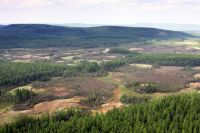
Scientists have the ability to identify the parent bodies of certain meteorites. For instance, meteorites originating from Mars and the moon have been discovered on our planet. It is highly likely that some meteorites are fragments from not only our solar system, but also other star systems. However, there is currently no scientific evidence to support this theory. Additionally, meteorites can be found not only on Earth’s surface, but also on other planets that possess an atmosphere.
Astronomers classify meteorites into different types based on their chemical composition. The first type is known as iron meteorites, which consist of 85% iron and 12% nickel. These meteorites account for approximately 5.7% of all meteorites found on Earth, and their surfaces often exhibit characteristic depressions called regmaglypts.
The second variety is known as iron-stone, which serves as an intermediary between iron and stone meteorites. These specimens contain nearly equal amounts of nickel iron and silicates, making up about 1.5% of the total mass of discovered meteorites.
The third category comprises stone meteorites, constituting the vast majority of those found on Earth, accounting for 92.8% of the total. They are composed of silicon, magnesium, calcium, iron, aluminum, and other elements in the form of oxides. Over 90% of stone meteorites contain chondrules, which are small spherical grains of silicate measuring one millimeter in diameter. These meteorites are referred to as chondrites, while those lacking chondrules are categorized as achondrites.
What is a meteor?
Both the term “meteor” and “meteorite” derive from the same Greek origin, meaning “floating in the air” or “lifted into the air”. While some may consider these words to be interchangeable, they actually have distinct meanings. A meteor does not refer to a celestial body that has fallen to Earth, but rather to the phenomenon itself, in which small meteoroids burn up in the Earth’s atmosphere. It is irrelevant what happens to the meteoroid afterwards – whether it crashes to Earth and becomes a meteorite, returns to space beyond the Earth’s atmosphere, or completely disintegrates within the atmosphere – the visible trail left behind is still referred to as a meteor. In the field of historical science, the term “meteor” was used to describe any celestial phenomena observed within the atmosphere. Nowadays, these phenomena are studied by the science of meteorology, while meteors, in their modern definition, are examined by the field of meteoretics.
Meteor showers are categorized as meteor streams, which are consistent groups of meteors that consistently appear in the same part of the sky at the same time. These meteor streams are created by comets that disintegrate as they pass through the inner solar system. Some of the most well-known meteor streams include the Perseids, which can be seen every August near the Perseus constellation, the Leonids, which are visible in mid-November near the Leo constellation, and the Quadrantids, which can be observed from late December to early January near the Volopassus constellation.
What is a space rock?
The term “space rock” originates from the ancient Greek word “asteroeides,” which means “star-like.” It gained popularity after 2006 and replaced the term “small planet.” Space rocks are relatively small celestial bodies that revolve around the sun. They typically have an irregular shape and an average diameter less than 1500 km. However, an asteroid must have a minimum diameter of at least 30 m, as smaller celestial bodies are referred to as meteoroids. Space rocks are significantly smaller in mass and size compared to the planets in our solar system, and they do not possess their own atmosphere. However, they may have moons or satellites.
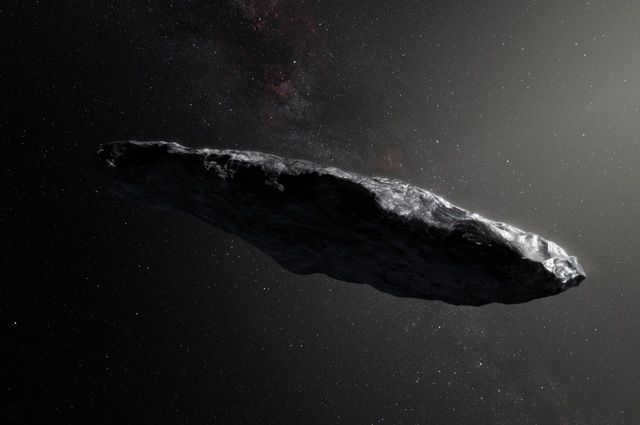

Estimates suggest that there may be approximately 1.1-1.9 million objects in the solar system with a diameter larger than 1 km. However, according to the Minor Planet Center (MPC) at the Smithsonian Astrophysical Observatory, only 794,832 asteroids have been identified so far. Previously, the largest asteroid in the solar system was considered to be Ceres, with a diameter of 933 km, but since 2006 it has been classified as a dwarf planet. Other notable large asteroids include Pallada (diameter 524 km), Vesta (520 km), and Juno (133 km). Vesta is the only asteroid in the asteroid belt that can be observed without special equipment.
In the beginning, asteroids were exclusively given names of female characters from Greek and Roman mythology. However, as time went on, asteroids with peculiar orbits started to be named after male heroes, and eventually, any name could be given to an asteroid. Currently, the Committee on Minor Planet Nomenclature is responsible for assigning official names to asteroids.
What is the definition of a comet?
The term “comet” originates from the ancient Greek word for “hairy”. Similar to asteroids, comets orbit the Sun, but their orbit is in the shape of a highly elongated conical section. Another distinction from asteroids is that when a comet approaches the Sun, it develops a coma, or head, which is a cloud of dust and gas, as well as a tail composed of dust and gas.
Comets originate from cometary nuclei, which are small icy bodies that can reach sizes of several tens of kilometers. Most cometary nuclei are found in the outer regions of the solar system, but there is a possibility that some of them come from interstellar space. When a cometary nucleus starts moving towards the center of the system, it heats up and gradually its ices begin to evaporate, thus creating the head and tail of the comet.
A comet has the potential to be either short-periodic or long-periodic. In the case of a short-periodic comet, when it enters the central part of the solar system, it becomes subject to the gravitational field of the larger planets. This causes the comet to remain in the inner part of the system and orbit around the Sun with a periodicity of approximately 200 years. With each repeated approach to the Sun, the comet gradually disintegrates and may eventually transform into a meteor swarm. On the other hand, long-period comets do not experience the gravitational pull of the planets and instead return to orbit almost back to their starting point. However, they do not remain there and once again begin their approach towards the Sun. The circulation period of such comets can extend to several million years.
According to the MPC, a total of 4106 comets have been identified to date. Originally, comets were named after the year in which they were spotted. However, this changed after the English astronomer Edmund Halley demonstrated that the comets observed in 1531, 1607, and 1682 were actually the same celestial object. He further predicted its return in 1759, leading to the comet being named Halley’s comet. As the 20th century commenced, the discovery of new comets became more frequent, resulting in changes to the naming conventions. Presently, comets are named based on the year of discovery, a letter representing the half-month in which it was found, and a number indicating its order of discovery within that half-month. For instance, a comet discovered as the second one in the latter half of January 2019 would be designated as 2019 B2.
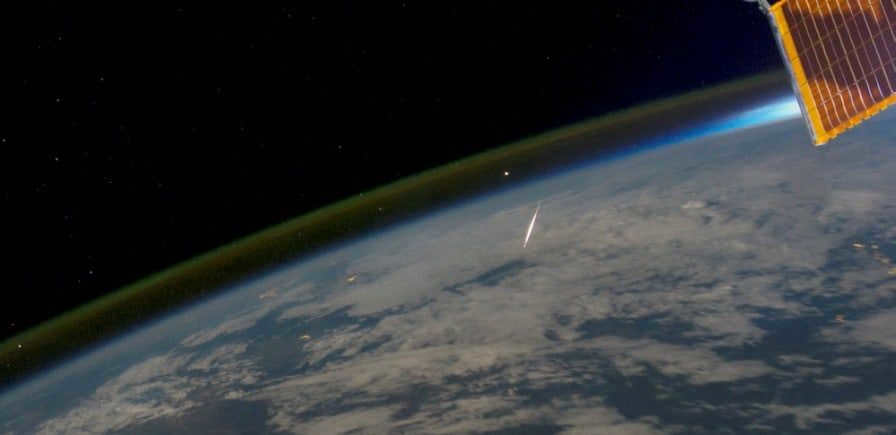
Meteors and meteorites are celestial objects that exist within our solar system. In this article, we will provide a detailed description and characterization of meteors and meteorites, accompanied by captivating photos. Additionally, we will explore the differences between these two phenomena, delve into the fascinating world of meteor streams, and present a comprehensive list of known meteors. Furthermore, we will uncover the origin of meteorites and discuss their unique composition.
Meteors are comprised of interplanetary particles that traverse through the Earth’s atmosphere. As they encounter friction, they become heated to such an extent that they incandesce. These luminous objects, known as meteor bodies, rapidly traverse through space, transforming into meteors. Within a matter of seconds, they streak across the sky, leaving behind mesmerizing luminous trails.
Meteor streams
It is estimated by scientists that the Earth receives approximately 44 tons of meteoric material on a daily basis. On any given night, a few meteors can typically be observed per hour. However, there are occasions when the number of meteors significantly increases, which is known as meteor streams. These events occur periodically or annually when the Earth traverses through a path of dusty remnants left by a comet.

The Leonids meteor stream, for example, is named after the constellation Leo, which is closest to where the meteors can be seen in the night sky. One of the most well-known meteor showers is the Perseids, which occur annually on August 12th. Each meteor that makes up the Perseids is actually a small fragment of the Swift-Tuttle comet, which completes a full orbit around the Sun every 135 years.
Other meteor showers, such as the Aquarids and Orionids, are associated with different comets, such as Halley and Tempel-Tuttle. The Taurids meteor shower is linked to the Enke comet. When these cometary dust particles enter the Earth’s atmosphere, most of them burn up before ever reaching the surface. However, some of this dust is collected by aircraft and studied in NASA laboratories to learn more about the composition of comets.
Primary meteor streams
| Name | Flow peak | Time of observation | Intensity (meteors per hour) | Source (asteroid or comet) |
| Quadrantids | January 3-4 | From 23:00 till dawn | 60-200 | (196256) 2003 EH1 |
| Lyrids | April 21-22 | From 21:30 until dawn | 10-15 | Comet C/1861 G1 |
| Eta Aquarides | May 5-6 | From 01:30 until dawn | 40-85 | Comet 1P/Halley |
| Delta Aquaridae | July 27-28 | From 21:30 until dawn | 15-20 | Unknown comet |
| Perseids | August 11-12 | From dusk to dawn | 60-100 | Comet 109P/Swift-Tuttle |
| Orionids | October 20-21 | From 22:00 until dawn | 25 | Comet 1P/Halley |
| Leonids | November 17-18 | From 23:30 until dawn | 10-15 | Comet 55P/Tempel-Tuttle |
| Geminids | December 13-14 | From 19:00 until dawn | 60-120 | (3200) Phaeton |
| Ursids | December 17-26 | From 23:30 until dawn | 10-15 | Comet 8P/Tuttle |
Meteorites
Pieces of rock and metal that survive their journey through the atmosphere and fall to Earth from asteroids and other celestial bodies are known as meteorites. While most meteorites discovered on our planet are small, pebble-sized or about the size of a fist, there are some that are larger than entire buildings. Throughout history, Earth has endured numerous significant meteorite impacts that have caused extensive damage and destruction.
One of the most well-preserved craters on Earth can be found in Arizona and is known as the Barringer meteorite crater. This crater, which has a diameter of approximately 1 km (0.6 miles), was formed by the impact of a piece of iron-nickel metal that was about 50 meters (164 feet) in diameter. The crater is estimated to be around 50,000 years old and remains remarkably intact, making it an ideal location for studying meteorite impacts. Since its recognition as an impact crater in 1920, scientists have discovered approximately 170 craters on Earth.
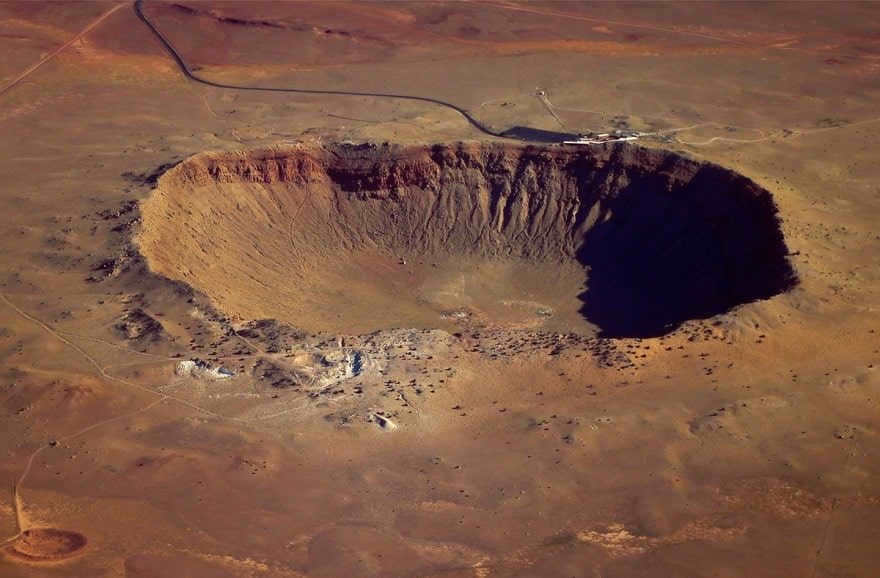
The Barringer Meteor Crater, also known as the Canyon Diablo Crater, was formed by a major asteroid impact approximately 50,000 years ago. This impact created a crater that is 1.2 kilometers (0.75 miles) in diameter and 170 meters (570 feet) deep. It is located in northern Arizona, near the town of Winslow.
The Barringer Meteor Crater is one of the best-preserved impact craters on Earth and is a popular tourist attraction. It is also a valuable scientific research site, providing insight into the processes and effects of asteroid impacts.
The impact of the Barringer meteorite had significant consequences for the local environment and ecosystems. It caused widespread destruction and upheaval, resulting in the extinction of many species of plants and animals in the area.
Despite its destructive power, the Barringer meteorite is a rare occurrence. It is estimated that impacts of this size only happen once every few thousand years.
Meteorites may appear similar to rocks found on Earth, but they typically possess a charred exterior. This scorching outer layer is a consequence of the meteorite melting as it experiences friction while passing through the atmosphere. There exist three primary classifications of meteorites: metallic, rocky, and stony-iron. While the majority of meteorites that descend upon Earth are of the stony variety, there has been an increase in the discovery of metallic meteorites in recent times. These weighty objects are more readily distinguishable from terrestrial rocks than their stony counterparts.
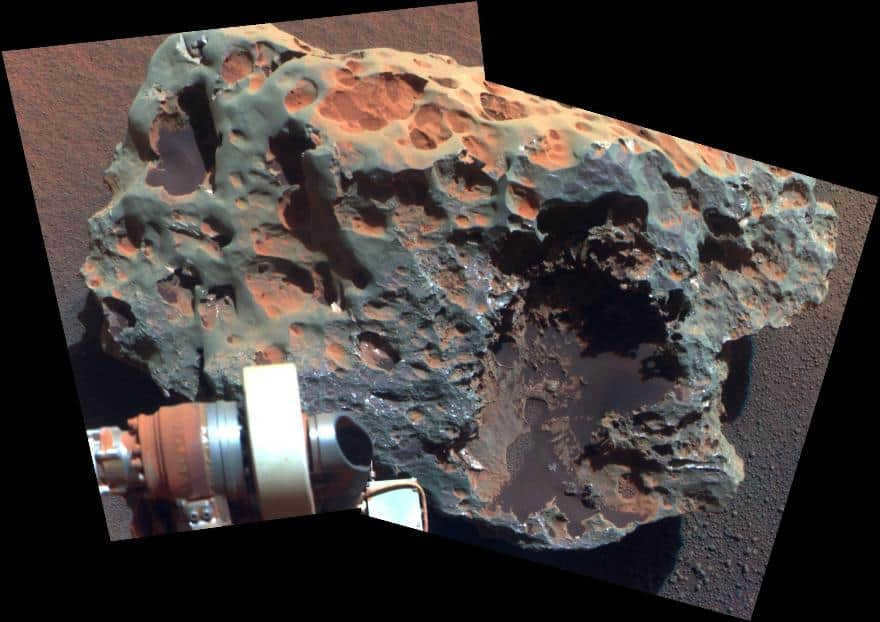

The Opportunity rover on Mars in September 2010 captured this photograph of a meteor. Meteorites, similar to this one, can also be found on other celestial bodies within the solar system. While exploring different types of meteorites on another planet, the Opportunity rover stumbled upon an iron-nickel meteorite, roughly the size of a basketball, in 2005. In 2009, it came across a much larger and heavier iron-nickel meteorite within the same vicinity. Throughout its expedition on Mars, the Opportunity rover has encountered a total of six meteorites.
Sources of meteorites
Over 50,000 meteorites have been discovered on our planet. Within this vast number, 99.8% have been traced back to the Asteroid Belt. The evidence supporting their origin from asteroids can be deduced from calculations based on photographic observations of the meteorite’s impact orbit projected back onto the asteroid belt. An examination of various meteorite classifications has revealed a correlation with certain types of asteroids, as well as their estimated ages of approximately 4.5 to 4.6 billion years.

Scientists have made an exciting discovery in Antarctica – a new meteorite has been found!
However, only one group of meteorites, known as eucrite, diogenite, and howardite, has been found to correspond to a specific type of asteroid. These types of meteorites originate from Vesta, the third largest asteroid in our solar system. It is important to note that asteroids and meteorites that fall to Earth are not remnants of a disintegrated planet, but rather consist of the original materials from which planets formed. By studying meteorites, scientists can gain valuable insights into the conditions and processes that occurred during the formation and early history of our solar system. This includes information about the age and composition of solid materials, the presence of organic matter, the temperatures experienced on asteroids’ surfaces and interiors, and the effects of impacts on the shape and structure of these materials.





